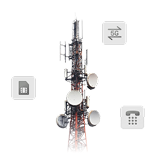
Cloud adoption has become a fundamental strategy for businesses looking to enhance agility, scalability, and innovation. The transition to cloud computing is not just a technological shift but a critical move that provides a competitive edge. The COVID-19 pandemic further accelerated this transformation, highlighting the need for resilient and adaptable IT environments to support remote operations and ensure business continuity (Source: arxiv.org).
However, as enterprises migrate their workloads to the cloud, a new challenge emerges: the need for seamless integration between multiple cloud services. Cloud-to-cloud integration has become a crucial requirement for businesses that operate across diverse cloud environments, ensuring efficient data exchange, operational coherence, and enhanced security.
The Rise of Cloud-to-Cloud Integration
As businesses diversify their cloud portfolios, integrating multiple cloud services has become essential to maintaining a competitive advantage. Cloud-to-cloud integration facilitates smooth communication between cloud applications, enhances operational efficiency, and ensures that disparate cloud platforms function as a unified ecosystem.
Key aspects of cloud-to-cloud integration include:
- Unified Data Management: Consolidating data from different cloud sources into a single, coherent system enhances data accuracy and accessibility.
- API Management: Effective management of Application Programming Interfaces (APIs) facilitates smooth communication between disparate cloud applications.
- Security and Governance: Implementing robust security measures and governance policies ensures data integrity and compliance across all cloud platforms.
- Automation and Orchestration: Automating workflows between cloud services reduces manual intervention, increasing efficiency and minimizing errors.
Industry-Specific Cloud-to-Cloud Integration Imperatives
Cloud-to-cloud integration is not a one-size-fits-all solution. Different industries have unique integration requirements that demand customized approaches. Below are some key industry-specific imperatives for cloud integration:
- E-Commerce Platforms:
E-commerce businesses rely on multiple cloud applications, including customer relationship management (CRM), inventory management, and payment gateways. Seamless integration between these systems ensures efficient operations and enhances customer experience. Real-time data synchronization across different cloud platforms allows businesses to track orders, manage supply chains, and provide personalized customer interactions.
- Financial Services:
In the highly regulated financial sector, integrating cloud-based risk management applications with real-time analytics platforms allows institutions to monitor and respond to market changes swiftly. Secure integration across multiple clouds ensures compliance with stringent regulatory standards while enabling seamless transactions, fraud detection, and AI-driven insights for better decision-making.
- Healthcare Systems:
The healthcare industry increasingly relies on cloud solutions to manage patient records, telemedicine services, and diagnostics. Cloud-to-cloud integration ensures that electronic health records (EHR) are accessible across platforms, allowing healthcare providers to deliver seamless patient care. Secure integration also facilitates HIPAA-compliant data sharing, ensuring patient confidentiality and operational efficiency.
- Manufacturing:
Modern manufacturing enterprises use cloud-based supply chain management tools, Internet of Things (IoT) platforms, and production monitoring systems to streamline operations. Integrating these systems across multiple clouds helps optimize production schedules, reduce downtime, and enhance predictive maintenance capabilities.
A Systematic 5-Step Approach to Cloud-to-Cloud Integration
To effectively implement cloud-to-cloud integration, enterprises should follow a structured approach that aligns with business objectives and IT capabilities. Below is a five-step framework to ensure a successful integration strategy:
1. Implement a Comprehensive Integration Platform:
Selecting the right integration platform is critical to ensuring seamless data flow across multiple cloud environments. Businesses should opt for an integration platform-as-a-service (iPaaS) solution that supports:
- Multiple integration patterns (real-time, batch processing, event-driven)
- Various data formats and protocols
- Scalable architecture with robust error handling
- Pre-built connectors for popular cloud applications (e.g., Salesforce, SAP, AWS, Azure, Google Cloud)
2. Prioritize Data Mapping and Transformation:
Each cloud application follows different data structures and schemas. To facilitate smooth data flow, organizations should:
- Standardize data formats across platforms
- Establish clear data mapping rules to align disparate data models
- Implement data transformation processes to ensure compatibility
- Maintain metadata consistency to improve data lineage and traceability
3. Employ API Management Best Practices:
APIs play a pivotal role in cloud-to-cloud integration by enabling seamless communication between applications. Effective API management involves:
- Centralizing API governance with an API gateway
- Implementing rate limiting and access controls to enhance security
- Monitoring API usage and performance to optimize efficiency
- Ensuring backward compatibility to prevent disruptions during updates
4. Embrace Real-Time Integration Capabilities:
Real-time data exchange is essential for enterprises that require instant insights and operational agility. To achieve real-time integration, businesses should:
- Leverage event-driven architectures (e.g., Kafka, AWS EventBridge)
- Implement streaming data pipelines for continuous data flow
- Utilize AI-powered analytics to derive actionable insights
- Reduce latency by optimizing network performance across clouds
5. Establish Robust Security Measures:
Security is a top priority when integrating cloud applications, as sensitive data traverses multiple environments. Key security measures include:
- Implementing end-to-end encryption to protect data in transit and at rest
- Enforcing multi-factor authentication (MFA) for secure access control
- Conducting regular security audits to identify and mitigate vulnerabilities
- Ensuring compliance with industry-specific regulations (e.g., GDPR, HIPAA, PCI DSS)
The Role of Tellestia in Cloud-to-Cloud Integration
As an industry expert in digital integration, Tellestia specializes in providing cloud-to-cloud integration solutions that empower businesses to build connected IT ecosystems. Our expertise spans across:
- iPaaS Consulting & Implementation: We help enterprises select, implement, and optimize iPaaS solutions tailored to their needs.
- API & Integration Governance: Our robust API management framework ensures secure and scalable integrations.
- Data Management & Transformation: We provide advanced data mapping and transformation services to harmonize data across clouds.
- Security & Compliance: Our integration solutions adhere to industry regulations, ensuring secure data exchange.
At Tellestia, we understand that cloud-to-cloud integration is more than just a technical process—it is a strategic enabler of business agility and growth. Our solutions are designed to help enterprises maximize the value of their cloud investments while ensuring seamless interoperability across platforms.
Conclusion
In the era of multi-cloud environments, cloud-to-cloud integration has become an essential capability for enterprises seeking operational efficiency, real-time insights, and enhanced security. By following a structured integration approach and leveraging the expertise of industry experts, businesses can unlock the full potential of their cloud ecosystems.
Seamless cloud integration is not just about connecting applications—it is about creating a unified, intelligent, and future-proof digital enterprise. As organizations continue their cloud transformation journeys, a well-executed cloud-to-cloud integration strategy will be the key to sustained innovation and competitive advantage.
Shyam Sundar
Technical Architect
Shyam Sundar is a Technical Architect at Tellestia, with a deep passion for building scalable and future-ready tech solutions. He shares insights on architecture, engineering best practices, and emerging technologies.
API Management
API Security
Cloud Integration
Cloud to Cloud Integration
Data Governance
Data Management
iPaaS

























